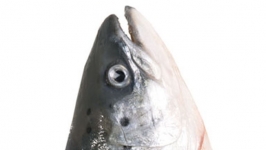HOW TO MAKE SUSTAINABLE SEAFOOD CHOICES
- Get to know your fishmonger. By asking what’s freshest and in season, you can stick to the best seafood options from local waters.
- Just ask, “Is this fish sustainable?” If your server or fish retailer doesn’t know, you probably have your answer. Next, ask where it’s from, how it’s harvested, and if it’s certified.
- Download a sustainable seafood app onto your smartphone for instant info on every species. Ocean Wise, Seafood Watch, msc [Marine Stewardship Council], and SeaChoice all have great smartphone tools.
- Look for ecolabels such as Ocean Wise and msc at the fish counter. You may also come across tags, barcodes, or QR codes that you can scan with your smartphone, or a This- Fish code to punch into the website thisfish.info. These are designed to support traceability, allowing you to instantly discover who caught the fish, where, when, and how.
- Join a community-supported fisheries (csf) program. You’ll buy shares at the start of the season for regular deliveries of traceable and affordable seafood caught by local fishers.
- Eat lower on the food chain. Consuming small fish such as sardines, anchovies, mackerel, and herring typically has less impact than eating big predator fish. You still need to check your sustainability app nonetheless, as any species can end up endangered as food trends, environment, and management strategies change.
- When on the Atlantic, eat Atlantic—supporting local fishers and economies is an often-overlooked aspect of sustainability.
- Experiment with seaweed. It’s a superfood, and wild seaweed and marine plant aquaculture can actually heal ocean environments.
- When choosing fresh seafood, eat with the seasons. You know it’s not ideal to eat imported strawberries in winter, and the same goes for off-season fresh wild fish species, which have to be shipped from afar.
- Don’t be afraid of the deep freeze—fresh is best, but properly thawed frozen fish is still delicious, and freezing allows us to enjoy locally caught species out of season.
- Favor filter feeders. Shellfish such as oysters, mussels, and clams clean the ocean and stimulate marine diversity.
- Try something new. There’s more in our oceans, lakes, and rivers than you think. To keep the pressure off our most popular species, ask your fish vendor what else they have in store. Sea urchins, anyone?
- Don’t treat fish like steak. You don’t need a 10-ounce slab of protein—make smaller portions of high-quality and sustainable fish the supporting cast in plant-forward dishes.
Copyright 2017 Chefs for Oceans. Recipes copyright 2017 by Ned Bell. Excerpted from Lure: Sustainable Seafood Recipes from the West Coast, by Ned Bell with Valerie Howes. Republished with permission from Figure 1 Publishing Inc.





